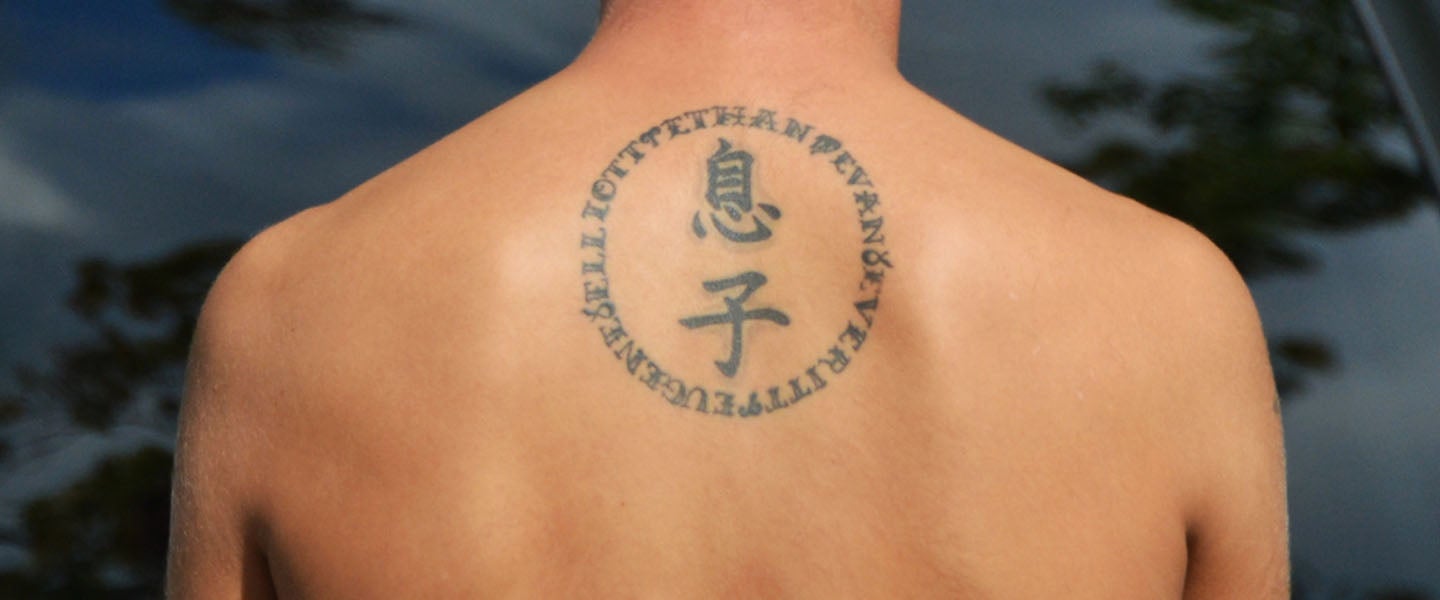Last month, in a now-deleted Instagram photo, Ariana Grande revealed that she got the name of her new single, “7 Rings,” tattooed in Japanese Kanji on her palm… or so she thought. As many of her Japanese-speaking fans quickly pointed out, Grande had accidentally had the word for shichirin (“七輪”) tattooed on her, which translates to a small Japanese charcoal grill.
Ariana Grande’s new tattoo “七輪” means Japanese style bbq grill, not 7 rings. ? If you want to know about 七輪, just google “SHICHIRIN” pic.twitter.com/HuQM2EwI62
— *amo* (@hey__amo) January 30, 2019
Making matters even worse for Grande and her now-tattooed palm, when she attempted to get the mistranslated tattoo fixed, the result ended up making even less sense, as Kotaku explains:
“Hoping to correct the ‘small charcoal grill’ (七輪) kanji, Grande added the kanji 指, meaning ‘finger.’ This addition attempts to turn the kanji 輪, meaning wheel or hoop, into the word 指輪 (yubiwa), meaning ‘ring’ as in for a finger, and mitigating the BBQ kanji. However, the kanji 指 and 輪 are split into different lines, so it looks weird. In English, this would be like writing ‘rings’ as ‘ri’ and then ‘ngs’ in another paragraph. Japanese kids are taught not to split kanji characters in school because it’s confusing. Now, you could split kanji for a stylized design, but that’s with correct Japanese, which her tattoo is not. Since the way that ‘seven’ is written remains wrong, this is another bad kanji tattoo.”
Why… how… now Ariana’s tattoo reads “Japanese BBQ finger” ? pic.twitter.com/zC2LxSKJtI
— Eimi Yamamitsu | 山光瑛美 (@eimiyamamitsu) January 31, 2019
Weirdly enough, Grande actually used the correct translation for seven rings (“七つの指輪”) in the music video for her song. But as USA Today reports, Grande explained in a now-deleted tweet that the mistranslation happened when she attempted to shorten the correct “七つの指輪” (seven rings) to “七輪” (small charcoal grill):
“Indeed, I left out ‘つの指’ which should have gone in between. It hurt like fuck n still looks tight. I wouldn’t have lasted one more symbol lmao. But this spot also peels a ton and won’t last so if I miss it enough I’ll suffer thru the whole thing next time.”
As a quick aside, while she’s indeed right that palm tattoos have a tendency to fade, artists who specialized in them, like Mark Walker, can tattoo them in such a way to ensure they stay put. I only know this because my palms are one of my few ink-free body parts, and I plan on having Walker tattoo them someday soon.
Moving on, though: As several Twitter-goers have since pointed out, getting a mistranslated Japanese tattoo is the perfect example of tattooing gone wrong, and a phenomenon that most of us thought was left back in the early 2000s, along with frosted tips.
Ariana Grande bringing back misspelled Japanese character tats is peak 2000s nostalgia
— Molly Lambert ? (@mollylambert) January 30, 2019
To prevent this happening to anyone else, I ask Marcus Lundqvist, a heavily-tattooed friend of mine who works as the shop manager for Sanctum Tattoo in Stockholm, what advice he might give someone considering a foreign-language tattoo. “I know some people who have Kanji characters, and they actually asked their Asian internet friends before getting them done,” he says (which makes me wonder why Grande didn’t at least run the idea by one of the people running her Japanese Twitter account first). “If you don’t have a foreign friend, I suggest taking the lettering directly from a book that looks and seems legit.” Lundqvist also says that any good tattooer should be happy to help you do some research before permanently etching the letters into your skin.
As a heavily-tattooed person, though, I’d advise against foreign-language tattoos altogether, for two reasons: (1) Getting a tattoo in your own language is always a safer bet, since translations are rarely exact; and (2) imagery — like, in the case of Grande’s new song, seven actual rings — oftentimes makes for a much more compelling tattoo (unless you plan on getting fancy script from a tattooer who specializes in lettering).
Plus, even if you do manage to find a direct translation, you might still end up being ridiculed for sporting a tattoo in a language that you know close to nothing about, as several internet-goers pointed out during this whole Grande tattoo fiasco:
a letter to @ArianaGrande:
hi, i love your music. just wanna clear that up, i don’t hate you. but please stop using japanese culture as an aesthetic. it’s not cute, it’s cultural appropriation. appreciating the culture and making an effort to understand it is fine, +— 瑞美 (@WONDERBLOSSOM) January 31, 2019
+but it’s very obvious that you’re not doing that. japanese culture is a part of people’s lives and their identities. many asian ppl were made fun of in school for it being a part of them. it’s not an album concept and it’s not for u to take & use it as your “brand” +
— 瑞美 (@WONDERBLOSSOM) January 31, 2019
its hundreds of years of beautiful history, not something for you to use because u want to be a cute anime girl. please learn and grow from this experience. your tattoo wasn’t yours to get even if it was translated correctly.
— 瑞美 (@WONDERBLOSSOM) January 31, 2019
So yeah — maybe just get a sick skull tattoo instead. Can’t misspell that.

